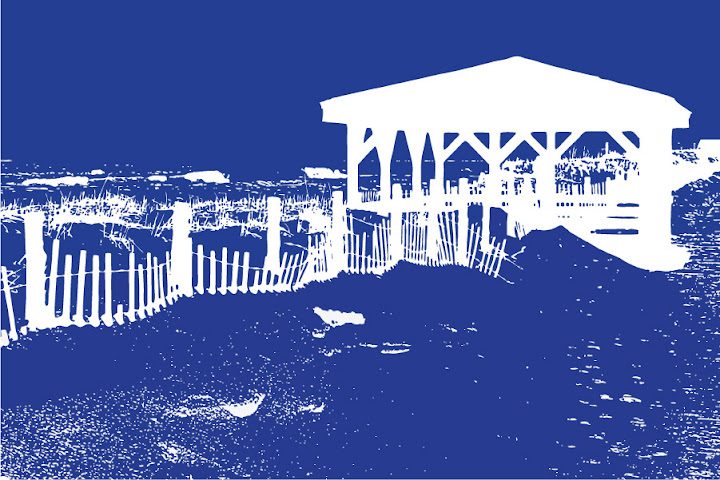We’ve been busy getting the brewery up and running but now that it is mostly done we can get back to what’s important—the beer. Our plan is to launch two beers that will be available year round. We also plan to brew up a different beer each season. One of the great things about NJ is that fact that we have four distinct seasons and hope to produce beers that are inspired by each.
We also plan to brew a few bigger beers during the year that will get either the bottle or barrel treatment—or both. And we plan to continue to produce small run pilot batches to experiment with new ingredients and / or recipes. These will most likely be featured in our tasting room.
Our philosophy is to keep our recipes simple, use only the best ingredients and combine traditional styles and techniques with some forward thinking. Since we love hops, balance isn’t necessarily a priority, but flavor is.
Finally we will do our best to try and incorporate local products and ingredients into our beers whenever possible to help make them truly local and unique. This holds true for our names as well. We came up with names that define certain seasons or imagery that remind us of living in coastal NJ.
Batch 001 will be called Single Fin and it will be our summer seasonal. It is a Belgian-style Blond ale. It was inspired and influenced by table beer traditionally brewed in the Trappist monasteries in and around Belgium.
Single Fin was designed with the hot, humid summer days in mind. It is pale in color, low in alcohol and easy to drink. We use German Pilsner and Vienna malts with a touch of White Wheat. Styrian Golding hops were used for bittering and a combination of more Styrian Golding and Czech Saaz hops were used for aroma.
Although we may have been heavy handed with the hops, the flavor is driven mostly by the unique Trappist yeast strain. East Coast Yeast was able to provide us with a commercial amount of their ECY-13 yeast strain. We love this strain because it produces a dry beer with a lot of fruit flavors and aromatics. We will only brew one 20 barrel batch of Single Fin then move on to our autumn seasonal. We plan to release this beer again early next summer.
Single Fin Summary:
Malt: German Pilsner, Vienna & White Wheat
Hops: Styrian Golding & Czech Saaz
Yeast: Trappist Strain
OG: 12° Plato
ABV: 5.0%
Color: 3.6
IBUs: 26
There is a small town on the coast of New Jersey close to where I live now and where I spent most of my summers growing up. Just after sunset the sky over the bay lights up with fantastic orange and red hues. It reminds me of the color of this beer—so we named our American-style Rye Pale Ale, Afterglow. It was the second beer we brewed and will be one of our year round beers.
The base malt for this beer is American two-row combined with light Munich malt from Germany. We use medium crystal malt from England to add some color and sweetness and a small amount of malted rye to add some subtle spiciness. It’s bittered with Columbus hops, flavored with German Hallertau and we used Cascade and Centennial hops in the whirlpool and for dry hopping.
As with all of our American-style ales we use a dry English yeast. An English yeast for American-style beers may seem unusual but we think this specific strain ferments clean enough to accentuate the hop flavors and aromas but leaves behind just a enough malt character to add some balance.
Afterglow Summary:
Malt: American Two-Row, German Munich, Medium English Crystal, Malted Rye
Hops: Columbus, German Hallertau, Cascade & Centennial
Yeast: Dry English
OG: 13.5° Plato
ABV: 5.5%
Color: 9.5
IBUs: 50
Our last tank was filled with our American-style IPA called Head High. More specifically it’s closer to a west coast style IPA. This style is typically lighter in color and drier in body then a traditional American-style IPA. We used a mix of American two-row and German pilsner for the base malt and added a small amount of light English crystal and Carapils malt for some color and body.
We used Columbus and Chinook in the boil, and Ahtanum, Citra and Centennial in both the whirlpool and for dry hopping. The resulting beer is not too bitter but hoppy and aromatic. At 6.5% ABV it's manageable enough that you can have a few pints.
We did a lot of pilot batches for this beer. The reason is that we were unable to get our hands on a couple of the hop varieties that we’ve been using in our IPAs for years—specifically Simcoe and Amarillo. So we had to tweak the IPA recipe we planned to use and began playing with different hop varieties and combinations.
We are really happy with the combination we came up with and think this is a better beer than the original. Of course, as soon as we get our hands on some Simcoe and Amarillo hops our imperial IPA called Overhead will be the next beer in our tanks.
Head High Summary:
Hops: Columbus, Chinook, Ahtanum, Citra, Centennial
Yeast: Dry English
OG: 16° Plato
ABV: 6.5%
Color: 6.3
IBUs: 67
These are our first few beers and they should be ready for release sometime next week. We’ve got a couple pilot batches going now and in the coming weeks plan to start brewing our autumn seasonal and fermenting a few surprises. Stay tuned.
